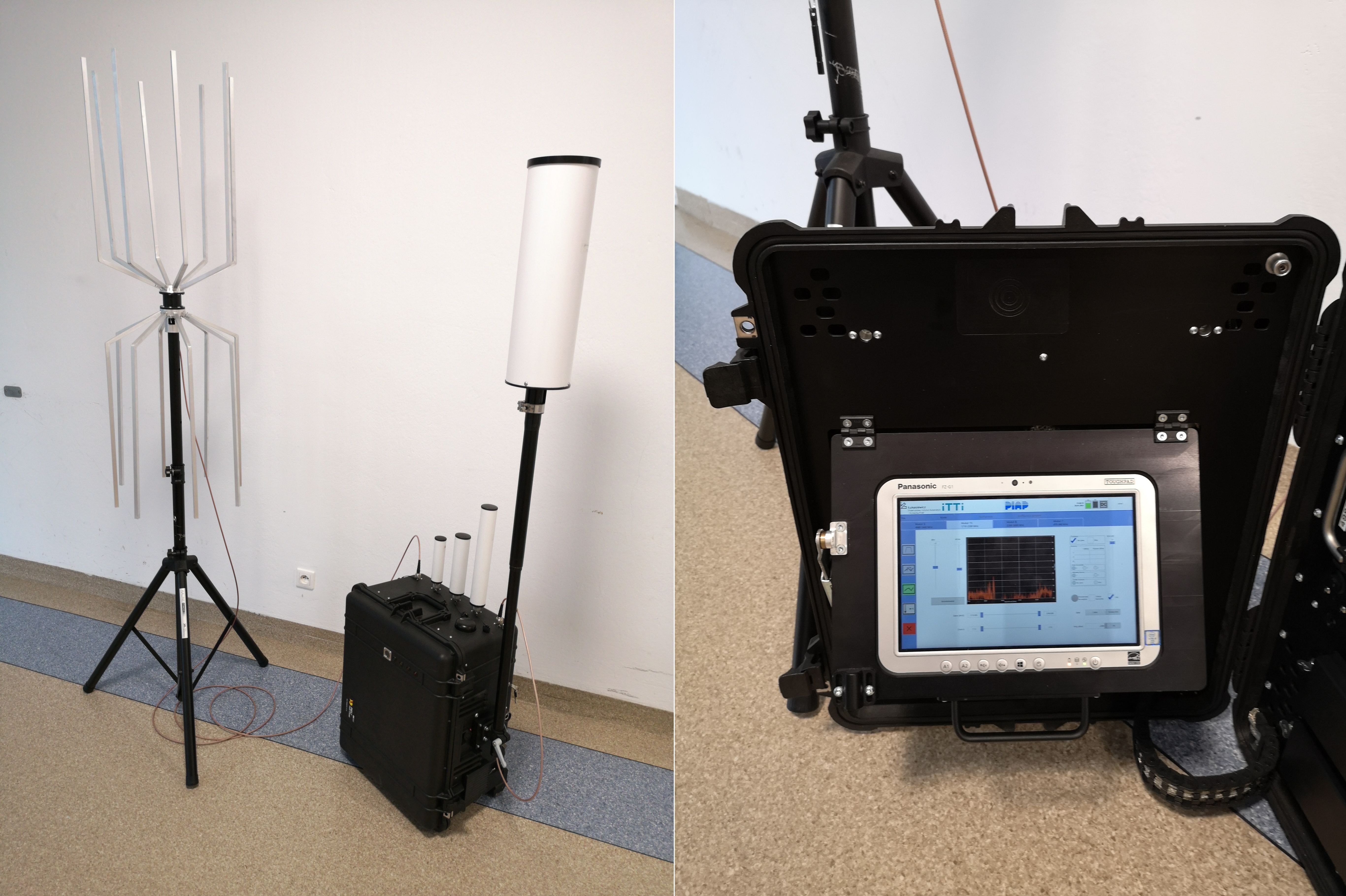Radio transmission interference in selected Border Guard facilities
The project aimed to develop and construct devices in portable (suitcase) and stationary versions for jamming radio transmission in the frequency range of 25-5,900 MHz

 Project title
Project title
Radio transmission interference in selected Border Guard facilities
 Name of Beneficiary/Beneficiaries
Name of Beneficiary/Beneficiaries
- Łukasiewicz Research Network - Industrial Research Institute for Automation and Measurements (consortium leader)
- ITTI Sp. z o.o.
 Name of programme
Name of programme
Project carried out for the benefit of the national defence and security
 Competition
Competition
Competition No. 7/2015 for the implementation of projects in the field of scientific research and development work for defence and security
 Project value
Project value
PLN 1,387,523
 Funding value
Funding value
PLN 1,248,766.
 Project delivery period
Project delivery period
21/12/2015 - 30/11/2020
View the results of our work



What problem is addressed by the project?
The project aimed to develop and construct devices in portable (suitcase) and stationary versions for jamming radio transmission in the frequency range of 25-5,900 MHz. In addition to the conventional continuous jamming mode, the devices also enable operation in responsive jamming and spectrum analyser modes. The responsive jamming mode, which triggers the jamming emission with the signal to be jammed, solves the problem of exposure to electromagnetic radiation for people who are in the vicinity of an operating device for long periods of time, reduces power consumption and also makes the jammer difficult to detect. The spectrum analyser mode allows you to perform an electromagnetic spectrum scan to detect transmitting devices and determine their operating frequency.
Direct digital signal synthesis (DDS) circuits have achieved high speed, and precision tuning over a wide frequency range has been achieved by using direct digital signal synthesis (DDS) circuits. The power stages of the transmitters use gallium nitride (GaN)-based HEMT field-effect transistors.
The devices are equipped with a modern user interface providing flexible configuration of the jamming signal spectrum shape, definition of protection bands for securing own communication, granting individual users access rights to specific functions and logging of events.
The modular design of the devices ensures easy reconfiguration of the supported frequency ranges, while the two battery banks in the portable version allow their replacement in operational conditions without interrupting operation. The units can be operated remotely via Ethernet, and their basic functions can also be activated using an infrared remote control.
The jamming equipment has been entirely designed in Poland and will be manufactured and developed there, which will undoubtedly increase the competitiveness of the Polish defence industry.
Who uses the project results?
Radio jamming devices resulting from the completed project are, due to their specificity, dedicated to services carrying out tasks in the field of defence and security. Potential users include the Armed Forces, Police, Border Guard, Military Counterintelligence Service, Internal Security Agency.
The main areas of application of the equipment are:
- radio communication blocking,
- protection against remote - radio detonation of explosive charges,
- preventing the operation of remote-controlled vehicles and of flying and floating vehicles,
- prevention of information leakage through WLAN and mobile phone systems
- scanning the electromagnetic spectrum to detect the source of emission.